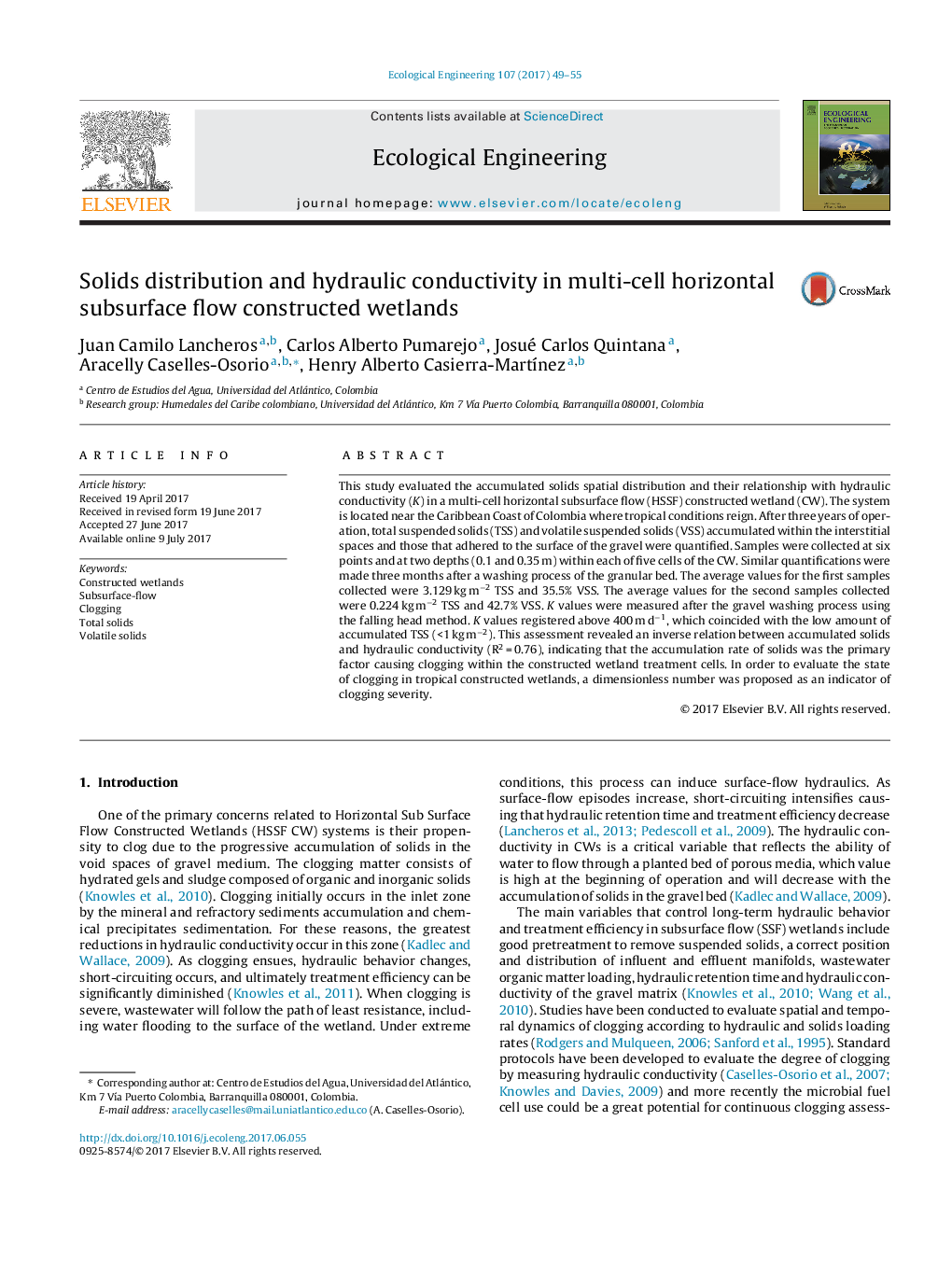| Article ID | Journal | Published Year | Pages | File Type |
|---|---|---|---|---|
| 5743659 | Ecological Engineering | 2017 | 7 Pages |
â¢Solids loading rate and hydraulic conductivity in constructed wetland were studied.â¢Total and volatile suspended solids were high in interstitial spaces.â¢There was an inverse relation between accumulated solids and hydraulic conductivity.â¢Lower clogging index (Ci) values could represent more problems of clogging.
This study evaluated the accumulated solids spatial distribution and their relationship with hydraulic conductivity (K) in a multi-cell horizontal subsurface flow (HSSF) constructed wetland (CW). The system is located near the Caribbean Coast of Colombia where tropical conditions reign. After three years of operation, total suspended solids (TSS) and volatile suspended solids (VSS) accumulated within the interstitial spaces and those that adhered to the surface of the gravel were quantified. Samples were collected at six points and at two depths (0.1 and 0.35 m) within each of five cells of the CW. Similar quantifications were made three months after a washing process of the granular bed. The average values for the first samples collected were 3.129 kg mâ2 TSS and 35.5% VSS. The average values for the second samples collected were 0.224 kg mâ2 TSS and 42.7% VSS. K values were measured after the gravel washing process using the falling head method. K values registered above 400 m dâ1, which coincided with the low amount of accumulated TSS (<1 kg mâ2). This assessment revealed an inverse relation between accumulated solids and hydraulic conductivity (R2 = 0.76), indicating that the accumulation rate of solids was the primary factor causing clogging within the constructed wetland treatment cells. In order to evaluate the state of clogging in tropical constructed wetlands, a dimensionless number was proposed as an indicator of clogging severity.
